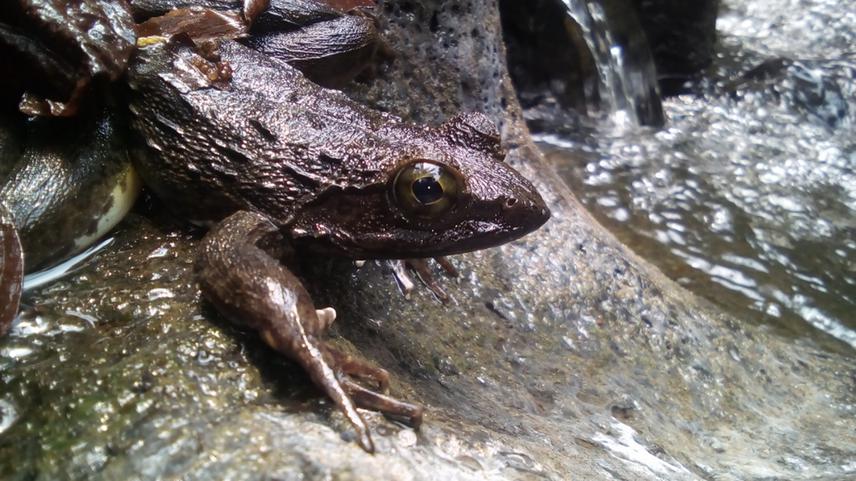Geraud Canis Tasse Taboue
Other projects
10 Jan 2024
Upgrading Conservation Efforts in Cameroon toward the Largest Living Frog: the Goliath Frog
The Goliath frog is still experiencing a decline in its population mainly due to human actions. Targeted conservation actions need to use a multidisciplinary approach and include a large geographical/spatial range to be effective. This proposed new initiative built from our previous successful experience in developing a framework to conserve the Goliath frog in the Moungo. It will endeavour to educate and raise awareness on the need to conserve the Goliath frog across the main part of its range. Additionally, data on habitat requirements will be sorted to inform stakeholders and promote long-lasting and effective conservation for this giant.

Juvenile Goliath frog obseved in Epimimbang
The Goliath frog (Conraua goliath) known as the largest frog on earth is a good example of the Cameroon and Africa iconic biodiversity. This endemic species from Cameroon and Equatorial Guinea is classified Endangered by the International Union for the Conservation of the Nature (IUCN, 2019), mainly from the evidence of continuous population decline across its range and difficulty in observing adults in the wild. In Cameroon, this frog is officially protected by the law, however, it continues to be intensively hunted because of its size for meat/protein and associated traditional beliefs. As the human population continues to grow, the construction of new roads provides hunters with more access to the Goliath frog habitat and also increases habitat fragmentation. This is coupled with an ongoing socioeconomic crisis in the western part of Cameroon forcing resettlement of population in nearby regions and potentially increasing hunting pressure on Goliath frog. Our work suggested there is potential for Goliath frog conservation in Cameroon by improving knowledge of locals about amphibians. However, during our interactions with various communities, there was a general feeling of aversion toward amphibians. Working among locals revealed that pupils, students and other stakeholders do not know much about amphibians and are either terrified or are not comfortable talking about them. This new initiative will therefore endeavour to the followings:
• Obtain updated data on the occupation and population status of the Goliath frog across its range within Cameroon to assess population trends in localities where historical data is available
• Quantify habitat requirements, such as riparian vegetation cover and potential threats as deforestation adjacent to rivers and infrastructure construction;
• Understand spatial and socio-economic drivers of frog hunting pressure across the Goliath range;
• Explore solutions to alleviate hunting pressure through workshops with stakeholders across the range of the Goliath Frog;
• Provide education sessions for various stakeholders to raise awareness on the need to conserve Goliath frog and amphibians in general.